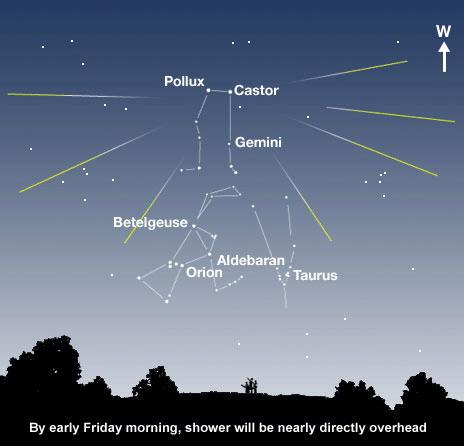Geminid meteor shower reaches peak early Friday morning
- Published
Tim O'Brien from Jodrell Bank Observatory: "They are actually moving at about 80,000mph... if it is clear tonight you have a chance of seeing some"
The annual Geminids meteor shower peaked overnight into Friday morning.
Each December, meteors appear to radiate from a point near the star Castor, in the constellation Gemini.
In early morning hours, that is located westward and overhead in the northern hemisphere and nearer the horizon in the southern hemisphere.
Many sky watchers saw dozens of "shooting stars" per hour, made easier to see by darkness provided by the "new moon" phase of the lunar cycle.
The shower comes about each year as the Earth passes through the path of an asteroid called 3200 Phaethon.
The asteroid leaves behind a trail of rocky debris that the Earth ploughs into - debris moving at 35km per second through the atmosphere, burning up in what have been described as spectacular displays.
"The sky was completely clear here," reported Ivan Hawick in the Shetland Islands.
"I could see eight meteors in one minute at times. One I saw was burning so bright - it was a lovely blue colour."
According to the International Meteor Organization, external, the "radiant" - the apparent point from which the meteors seem to come - was visible from sunset in far north of the equator; the constellation rose above the horizon at about midnight local time in the southern hemisphere.
The Geminids are less well-known relative to other annual meteoric performances such as the Perseids, in part because December weather often threatens a clear view of the show.
